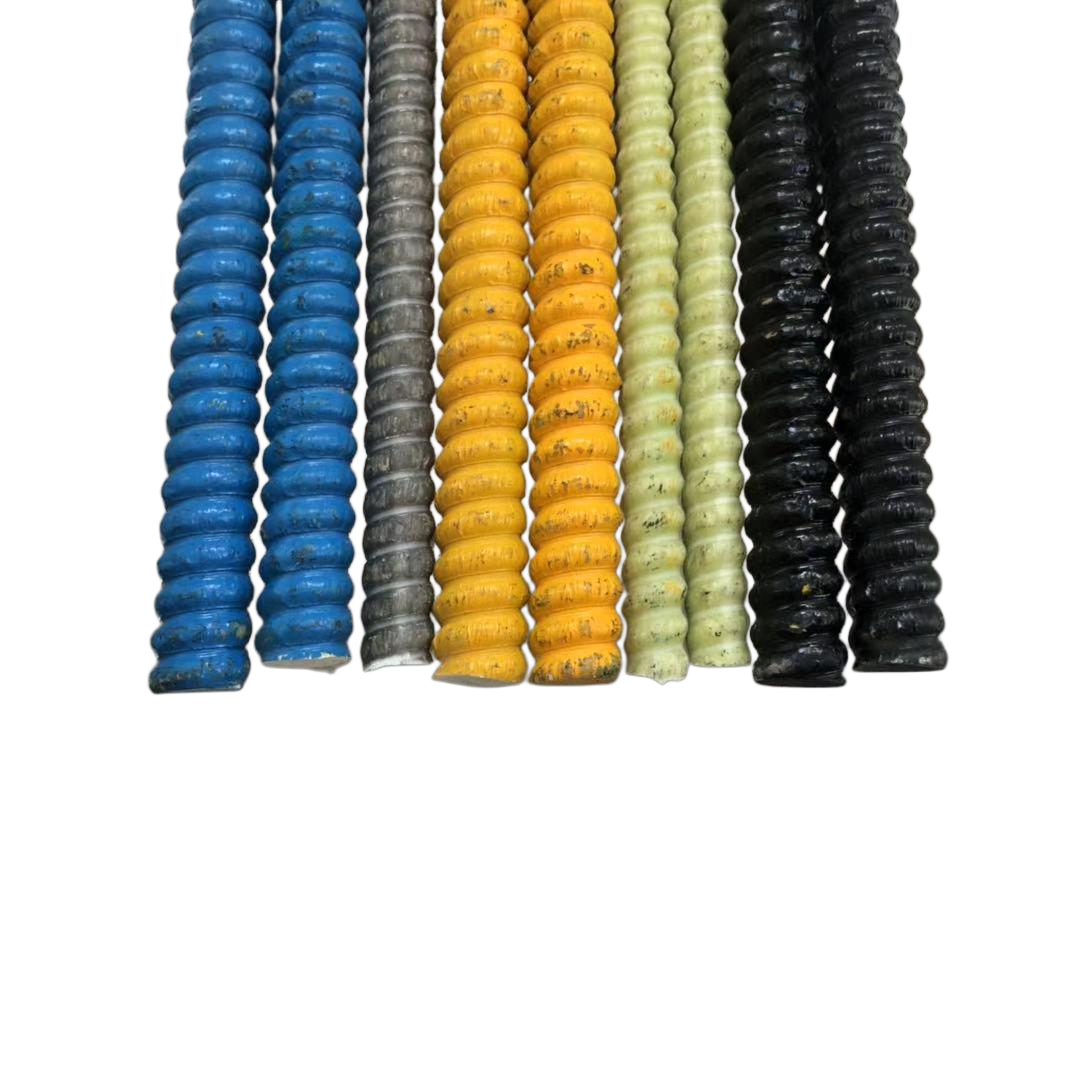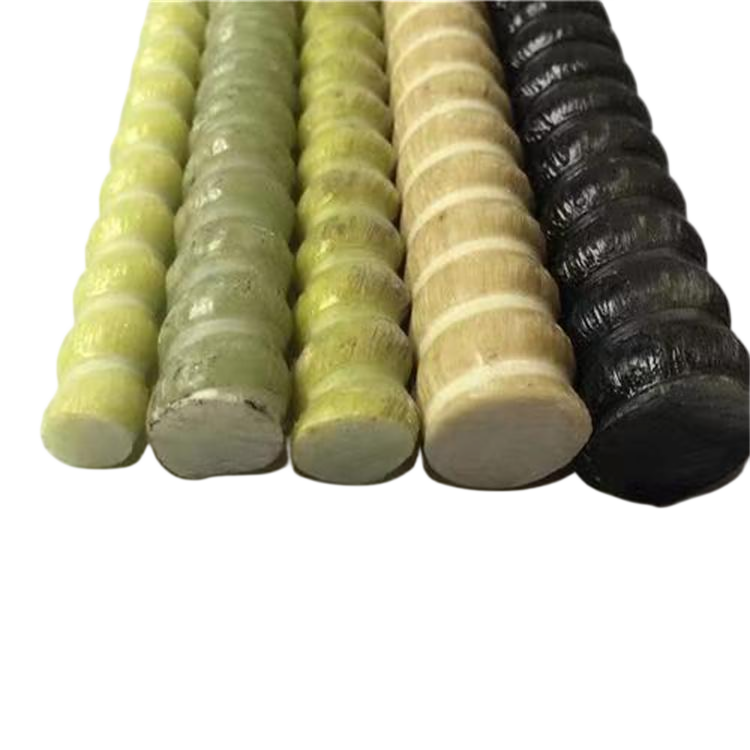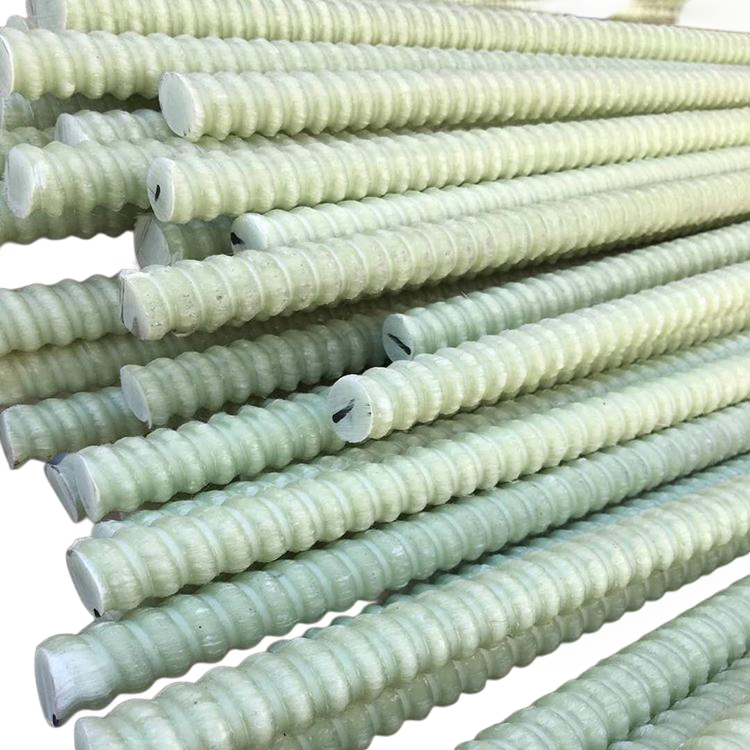Introduction
In the realm of modern construction and engineering, the quest for materials that offer superior performance while reducing cost and weight is incessant. Among the materials garnering significant attention is fiberglass, specifically in the form of Fiberglass Rebar. This article delves deep into the comparative analysis of fiberglass and steel, examining whether fiberglass can indeed surpass steel in strength and other critical performance metrics. Through a comprehensive exploration of material properties, applications, and technological advancements, we aim to provide a nuanced understanding of this pivotal question.
Material Properties of Fiberglass and Steel
To assess the strength of fiberglass relative to steel, it is imperative to understand the fundamental material properties of both. Steel, an alloy primarily composed of iron and carbon, has been the cornerstone of construction and manufacturing due to its high tensile strength, durability, and malleability. On the other hand, fiberglass is a composite material made from extremely fine fibers of glass. When these fibers are embedded in a resin matrix, they form a Glass Fiber Reinforced Polymer (GFRP), exhibiting unique properties.
Tensile Strength
Tensile strength is a critical parameter that indicates how much stretching stress a material can withstand before failure. Steel typically exhibits a tensile strength ranging from 250 to 550 MPa, depending on the type and grade. Fiberglass composites, specifically GFRP used in Fiberglass Rebar, can reach tensile strengths up to 1000 MPa. This indicates that, in terms of tensile strength alone, fiberglass can surpass steel, making it highly suitable for applications requiring high tension resistance.
Density and Weight
The density of steel is approximately 7850 kg/m³, contributing to its considerable weight in structural applications. Fiberglass, however, has a density of around 1850 kg/m³, making it significantly lighter—nearly one-quarter the weight of steel. This substantial reduction in weight can lead to easier handling, reduced transportation costs, and lower structural load, which is especially advantageous in large-scale construction projects.
Corrosion Resistance
Corrosion is a pervasive issue affecting steel structures, leading to degradation over time and necessitating costly maintenance. Fiberglass exhibits exceptional resistance to corrosion, as it does not oxidize or react adversely when exposed to moisture, chemicals, or extreme temperatures. This makes Fiberglass Rebar an ideal choice for environments prone to corrosive elements, such as marine settings or chemical plants.
Thermal and Electrical Properties
Understanding the thermal and electrical characteristics of materials is crucial for determining their suitability in specific applications.
Thermal Conductivity
Steel has high thermal conductivity, approximately 50 W/(m·K), which can lead to thermal bridging in construction, affecting energy efficiency. Fiberglass, with a thermal conductivity of about 0.04 W/(m·K), offers superior insulation properties. This low thermal conductivity helps in maintaining temperature stability within structures, enhancing energy efficiency and reducing heating and cooling costs.
Electrical Conductivity
Steel is an excellent electrical conductor, which can be a liability in applications where electromagnetic interference must be minimized. Fiberglass is inherently non-conductive, making it a suitable material for constructing facilities that require electromagnetic neutrality. For instance, in the construction of MRI rooms or electrical substations, the utilization of Fiberglass Rebar ensures that electromagnetic fields are not disrupted, maintaining the integrity of sensitive equipment.
Mechanical Performance under Stress
Evaluating a material's performance under various stress conditions provides insights into its practical applications and limitations.
Elastic Modulus
The elastic modulus measures a material's tendency to deform elastically (i.e., non-permanently) when a force is applied. Steel boasts a high elastic modulus of approximately 200 GPa, indicating stiffness and resistance to deformation. Fiberglass has a lower elastic modulus, ranging from 30 to 50 GPa. This means fiberglass is less stiff than steel, which can be advantageous or disadvantageous depending on the application. In structures where flexibility is beneficial to absorb energy or vibrations, fiberglass's lower stiffness can be an asset.
Fatigue Resistance
Materials subjected to cyclic loading can experience fatigue, leading to failure over time. Fiberglass exhibits excellent fatigue resistance, maintaining structural integrity under repeated stress cycles. This attribute is critical in applications such as bridge decks and marine structures, where constant stress is a factor. Steel, while strong, can be susceptible to fatigue failure if not properly designed or treated, requiring more rigorous maintenance and inspection protocols.
Environmental and Chemical Stability
The longevity and durability of a material are heavily influenced by its interaction with environmental factors and chemicals.
Resistance to Chemicals
Fiberglass is highly resistant to a wide range of chemicals, including acids and salts. This makes it an excellent choice for structures exposed to harsh chemical environments, such as wastewater treatment facilities and chemical processing plants. Steel, unless specially treated or alloyed, can corrode or degrade when exposed to certain chemicals, jeopardizing structural integrity.
Temperature Resistance
Fiberglass maintains its strength and structural properties across a broad temperature range, typically up to 300°C without significant degradation. At temperatures above this threshold, the resin matrix may begin to deteriorate. Steel, conversely, retains its properties at higher temperatures but can lose strength rapidly if temperatures approach its melting point. For applications involving extreme heat, steel may be preferable, but for most standard conditions, fiberglass offers sufficient thermal stability.
Applications and Case Studies
Understanding practical applications where fiberglass outperforms steel provides real-world context to the material properties discussed.
Infrastructure Projects
In infrastructure, the use of Fiberglass Rebar has been increasingly adopted in bridge construction, particularly in decks and barriers. Its corrosion resistance extends the lifespan of these structures, reducing maintenance costs. For example, the Pier 15 project in San Francisco utilized fiberglass rebar to enhance durability against the corrosive marine environment, resulting in a projected lifespan extension of over 50 years compared to traditional steel reinforcement.
Marine and Coastal Structures
Marine structures are constantly exposed to saltwater, leading to accelerated corrosion of steel components. Fiberglass's inherent corrosion resistance makes it an ideal material for docks, seawalls, and offshore platforms. The Harbor Light Marina in South Carolina replaced steel reinforcements with fiberglass rebar in their renovation, significantly reducing maintenance frequency and costs associated with corrosion damage.
Electrical and Medical Facilities
In facilities where electrical conductivity poses a risk, such as MRI rooms or electrical substations, fiberglass's non-conductive nature is critical. It eliminates the risk of interference with sensitive electronic equipment. The installation of fiberglass rebar in the construction of the Central Medical Hospital's MRI wing ensured electromagnetic neutrality, safeguarding equipment performance and patient safety.
Economic Considerations
Beyond material properties, the economic impact of choosing fiberglass over steel is a significant factor in decision-making processes.
Initial Material Costs
The upfront cost of fiberglass materials can be higher than that of traditional steel. However, when considering the total cost of ownership, including maintenance, replacement, and labor, fiberglass often proves to be more cost-effective. The lighter weight of fiberglass reduces transportation expenses and simplifies the installation process, leading to labor cost savings.
Lifecycle Maintenance
Steel structures require regular maintenance to mitigate corrosion and rust, adding to long-term expenses. Fiberglass, with its resistance to environmental degradation, demands minimal maintenance. Over the lifespan of a project, this translates into substantial savings. The City of Toronto reported a 30% reduction in maintenance costs after switching to fiberglass rebar for their waterfront revitalization projects.
Customization and Versatility
Fiberglass materials offer a level of customization that can be tailored to specific project needs, enhancing their appeal over steel in various scenarios.
Dimensional Flexibility
Manufacturers like SenDe provide Fiberglass Rebar in a range of diameters and lengths, customizable to project specifications. This flexibility allows engineers to optimize material usage, reducing waste and ensuring that the reinforcement fits the design requirements precisely.
Composite Integration
Fiberglass can be integrated with other composite materials to enhance properties such as strength, thermal resistance, and durability. This adaptability is not as readily achievable with steel, providing fiberglass with a competitive edge in innovative engineering solutions.
Safety and Regulatory Compliance
Ensuring that materials meet safety standards and regulatory requirements is critical in any construction or engineering project.
Standards and Certifications
Fiberglass rebar products have undergone rigorous testing to comply with international standards, such as ASTM D7957/D7957M for GFRP bars. Compliance ensures that the material performs reliably under specified conditions. Manufacturers like SenDe have invested in testing and certification, providing assurance of quality and safety for their Fiberglass Rebar.
Fire Resistance
While steel is non-combustible, fiberglass composites can be engineered to have fire-retardant properties. This is achieved through the use of specialized resins and additives. In applications where fire resistance is critical, fiberglass can meet stringent fire codes while providing the other benefits previously discussed.
Environmental Impact
Sustainability and environmental considerations are increasingly important in material selection.
Carbon Footprint
The production of steel is energy-intensive, resulting in a significant carbon footprint. Fiberglass production consumes less energy and emits fewer greenhouse gases. Utilizing Fiberglass Rebar contributes to reducing the overall environmental impact of construction projects.
Recyclability
Steel is widely recycled, which mitigates some environmental concerns. Fiberglass recycling is more challenging due to the composite nature of the material. However, advancements are being made in fiberglass recycling technologies, aiming to improve the sustainability profile of fiberglass products.
Conclusion
The question of whether fiberglass is stronger than steel cannot be answered with a simple affirmative or negative. Strength must be considered in context—tensile, compressive, fatigue, and environmental resistance. Fiberglass, particularly in the form of Glass Fiber Reinforced Polymer used in Fiberglass Rebar, exhibits superior tensile strength, corrosion resistance, and weight advantages over steel. These properties make it a formidable alternative in numerous applications, offering long-term economic and performance benefits. While steel retains advantages in stiffness and high-temperature applications, the advancements in fiberglass technology are expanding its applicability, positioning it as a material of choice for the future of construction and engineering.
Frequently Asked Questions
1. How does the tensile strength of fiberglass compare to steel?
Fiberglass can have a tensile strength exceeding that of certain grades of steel, reaching up to 1000 MPa. This makes fiberglass particularly strong in tension, surpassing many traditional steel applications.
2. Is fiberglass rebar suitable for all construction projects?
Fiberglass rebar is suitable for a wide range of projects, especially where corrosion resistance and weight reduction are priorities. However, it may not be ideal for applications requiring extremely high stiffness or those exposed to temperatures exceeding 300°C.
3. What are the cost implications of using fiberglass over steel?
Initially, fiberglass can be more expensive than steel. Nonetheless, the overall cost savings from reduced maintenance, longer lifespan, and lower labor costs often make fiberglass a more economical choice in the long term.
4. Can fiberglass rebar be customized for specific project needs?
Yes, manufacturers like SenDe offer fiberglass rebar in various diameters and lengths, customizable to meet specific project requirements, enhancing design flexibility and efficiency.
5. How does fiberglass perform in extreme temperatures?
Fiberglass maintains its structural integrity up to 300°C. Beyond this temperature, the resin matrix may degrade. For most construction applications, this temperature resistance is sufficient, but steel may be preferred for extreme heat environments.
6. What are the environmental benefits of using fiberglass rebar?
Fiberglass production has a lower carbon footprint compared to steel. Additionally, its corrosion resistance leads to longer-lasting structures, reducing the environmental impact associated with repairs and replacements.
7. Are there any limitations to using fiberglass in construction?
While fiberglass offers numerous benefits, limitations include lower stiffness compared to steel and challenges with recycling. It may not be suitable for applications requiring very high rigidity or where recycling at the end of life is a critical concern.



























